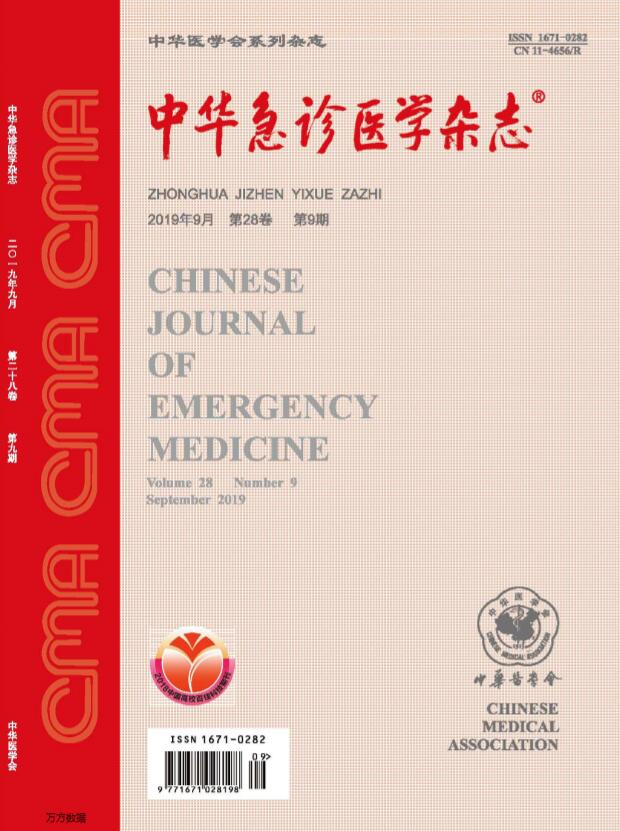高血压对急性主动脉夹层预后的影响
Q4 Nursing
引用次数: 0
摘要
目的探讨急性主动脉夹层(AAD)合并高血压患者的临床特点和预后,探讨影响AAD预后的其他相关因素。方法本研究纳入了2000年1月至2015年12月期间北京大学人民医院连续收治的AAD患者。包括在发病14天内通过CT血管造影、主动脉造影或磁共振成像诊断为AAD的患者。排除患有传染病、血液病、恶性肿瘤、自身免疫性疾病的患者以及没有明确临床诊断或数据不完整的患者。根据患者的高血压病史,将其初步分为两组,并对其临床特征进行比较分析。我们根据住院结果将AAD患者进一步分为生存组和死亡组,并分析与预后相关的因素。应用Logistic回归分析方法分析AAD患者住院死亡的独立危险因素,P<0.05为显著值。结果高血压组为237/346例(68.45%),伴随着合并症(冠心病或糖尿病)的患病率增加和入院血压(收缩压和舒张压,P 0.05)的统计学显著升高。与没有高血压的患者相比,高血压患者接受手术治疗的可能性较小(P 0.05)。进一步的逻辑回归分析显示,高血压的存在没有独立预测AAD患者的住院死亡率。年龄、斯坦福AAD分类、NLR和血小板计数等因素对住院死亡率有独立的预测价值(P<0.05)。结论AAD合并高血压患者年龄较大,合并冠心病、糖尿病等疾病较多。高血压本身的存在与AAD患者的住院死亡率没有直接关系,而斯坦福分类、年龄、NLR和血小板计数是独立的风险预测因素。关键词:高血压;急性主动脉夹层;预后;中性粒细胞与淋巴细胞比率;血小板计数本文章由计算机程序翻译,如有差异,请以英文原文为准。
The effect of hypertension on the prognosis of acute aortic dissection
Objective
To investigate the clinical characteristics and prognosis of patients with acute aortic dissection (AAD) and hypertension, and explore other related prognostic factors in AAD.
Methods
The present study enrolled consecutive patients diagnosed with AAD who were admitted to Peking University People's Hospital between January 2000 to December 2015. Patients diagnosed with AAD by CT angiography, aortography or magnetic resonance imaging within 14 days of onset were included. Patients with infectious diseases, haematological diseases, malignancies, autoimmune diseases and patients without clearly clinical diagnosis or incomplete data were excluded. The patients were initially divided into two groups based on their history of hypertension, and their clinical characteristics were compared and analyzed. We further divided AAD patients into survival group and death group according to their in-patient outcomes, and factors related to their prognoses were analyzed. Logistic regression analysis was applied to analyze the independent risk factors related to hospital death in AAD patients with P<0.05 as the significant value.
Results
The hypertensive group contained 237/346 cases included (68.45%), patients in this group were generally older than their non-hypertensive counterparts, accompanied by increased prevalence of comorbidities (coronary heart diseases or diabetes) and a statistical significant elevated admission blood pressures (systolic and diastolic, P 0.05). Hypertensive patients were less likely to receive surgical treatment compared with those without hypertension(P 0.05). Further logistic regression analysis revealed the presence of hypertension did not independently predict in-hospital mortality of AAD patients. Factors such as age, Stanford classification of the AAD, NLR and platelet counts were found to have independent predictive values for in-hospital mortality (P<0.05).
Conclusion
AAD patients with hypertension are generally older, have more comorbidities such as coronary heart diseases and diabetes. The presence of hypertension itself is not directly associated with in-hospital mortality in AAD patients, while the Stanford classification, age, NLR and platelet counts are independent risk predictors.
Key words:
Hypertension; Acute aortic dissection; Prognosis; Neutrophil to Lymphocyte ratio; Platelet counts
求助全文
通过发布文献求助,成功后即可免费获取论文全文。
去求助
来源期刊

中华急诊医学杂志
Nursing-Emergency Nursing
CiteScore
0.10
自引率
0.00%
发文量
8629
期刊介绍:
Chinese Journal of Emergency Medicine is the only national journal which represents the development of emergency medicine in China. The journal is supervised by China Association of Science and Technology, sponsored by Chinese Medical Association, and co-sponsored by Zhejiang University. The journal publishes original research articles dealing with all aspects of clinical practice and research in emergency medicine. The columns include Pre-Hospital Rescue, Emergency Care, Trauma, Resuscitation, Poisoning, Disaster Medicine, Continuing Education, etc. It has a wide coverage in China, and builds up communication with Hong Kong, Macao, Taiwan and international emergency medicine circles.
 求助内容:
求助内容: 应助结果提醒方式:
应助结果提醒方式:


